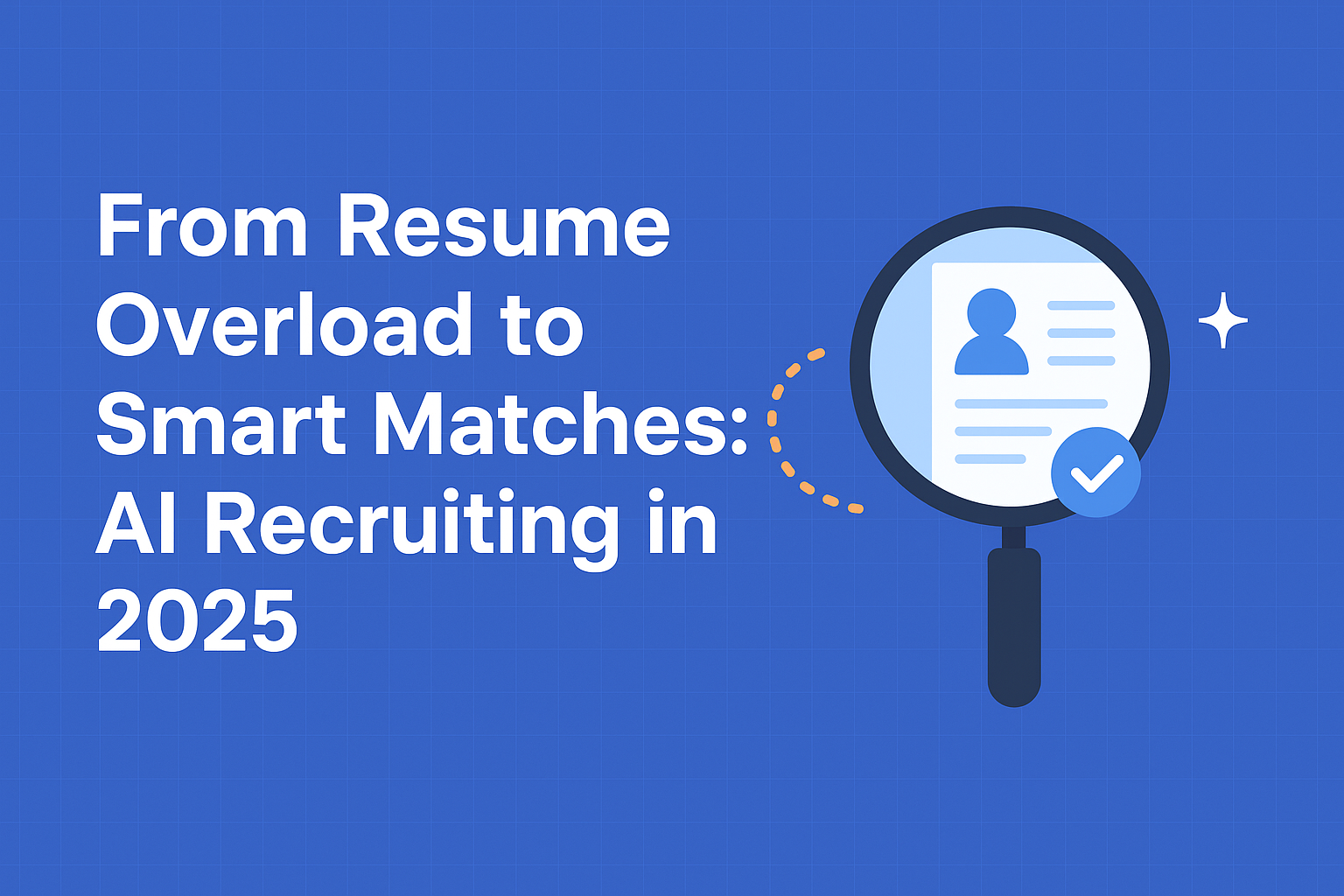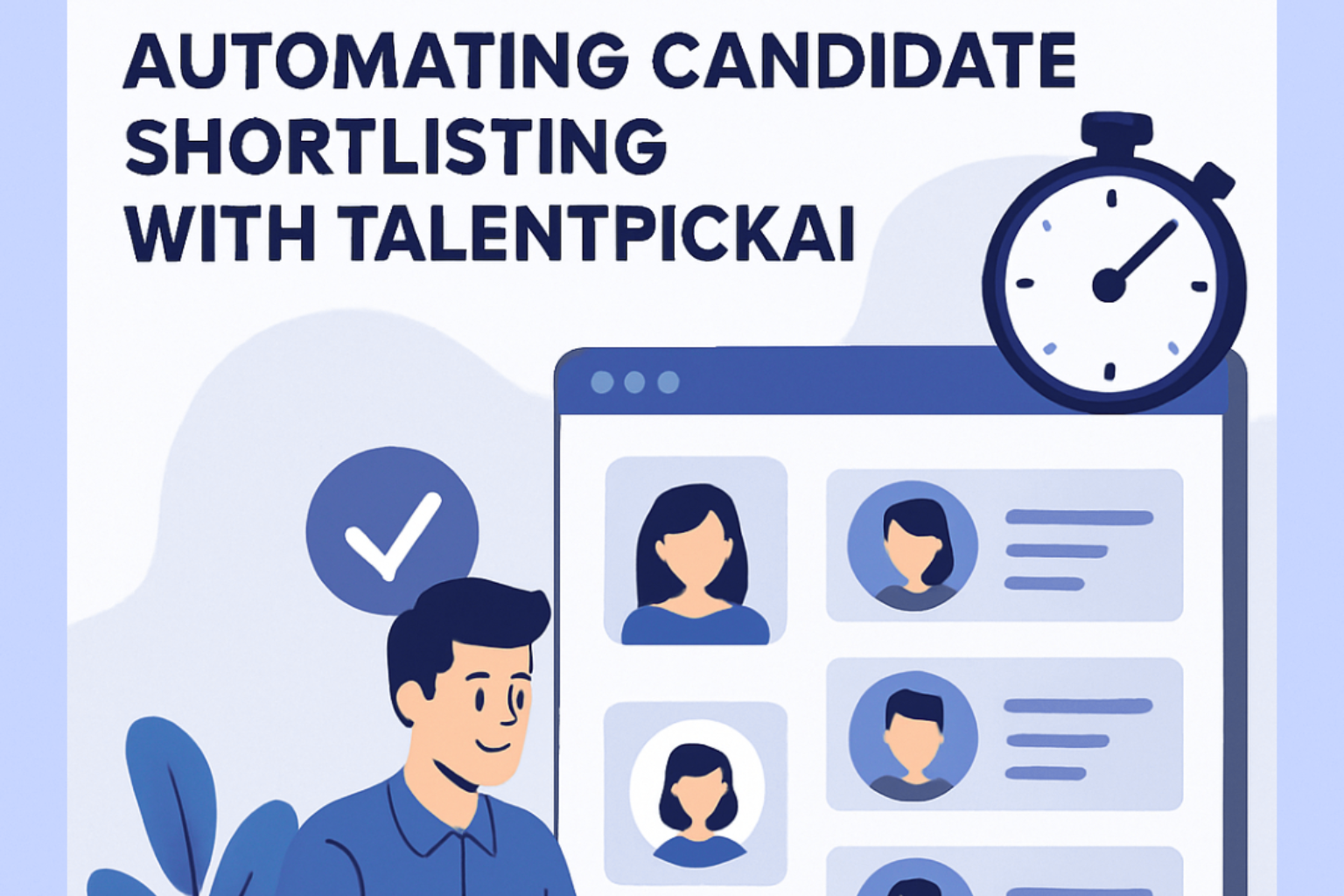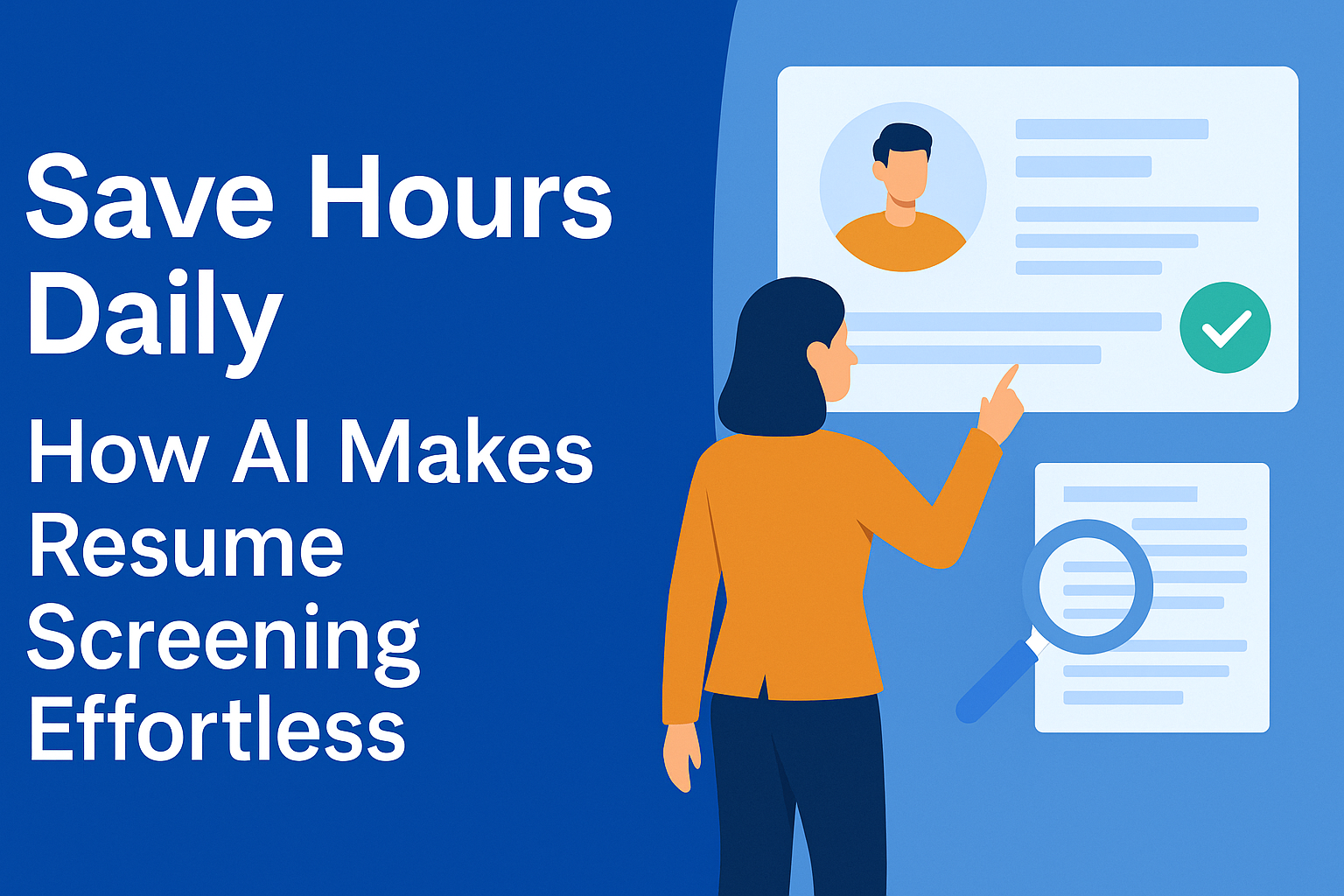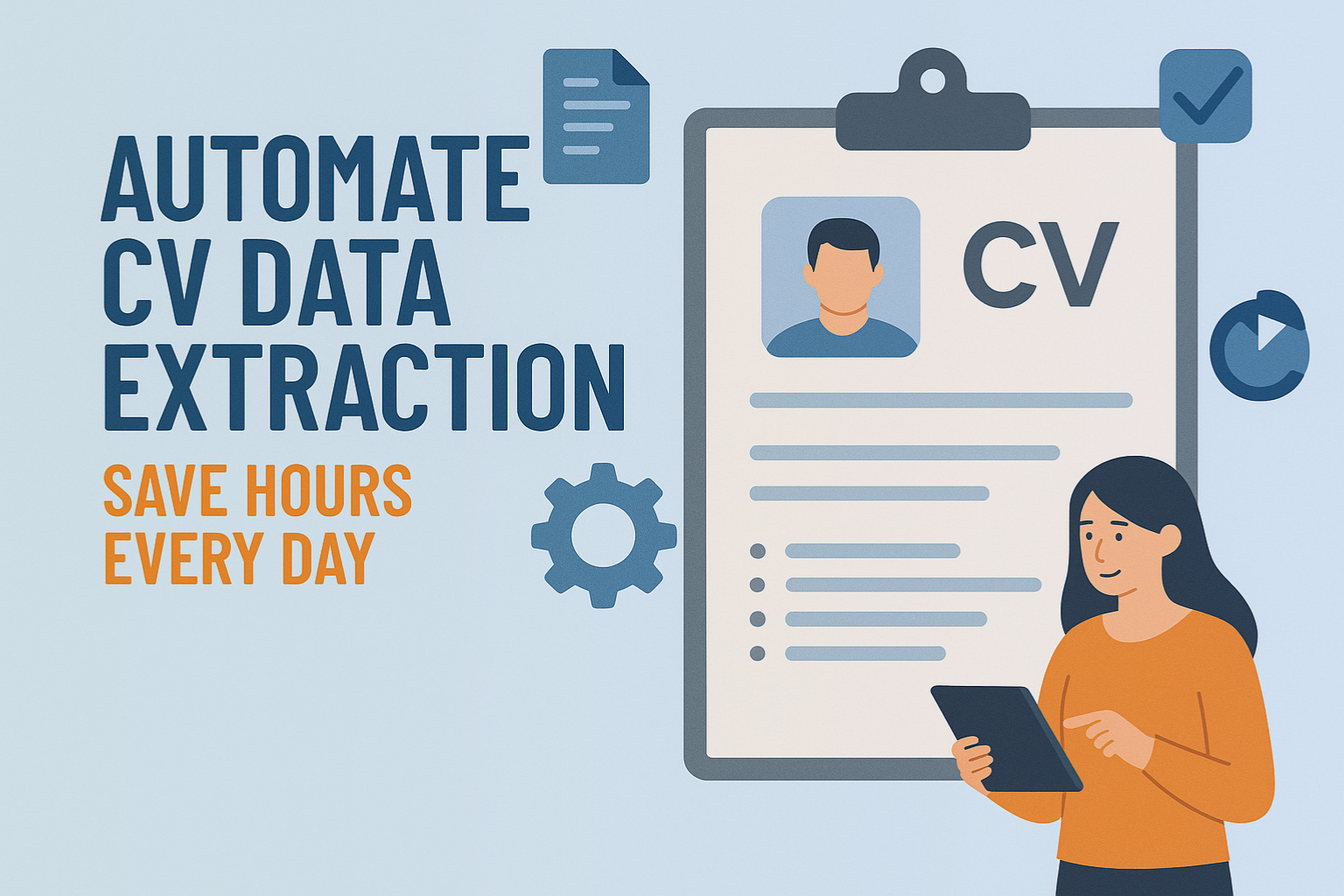
Introduction: The Resume Avalanche Every Recruiter Knows
If you’ve ever opened your inbox to hundreds of resumes after posting a single job, you’re not alone. Recruiters and startup founders across the U.S., U.K., and Canada face the same challenge, how do you find the right candidate in a sea of applications?
The answer lies in one phrase: AI recruiting software
In 2025, recruitment is no longer about scanning resumes manually. It’s about using AI sourcing and matching software, predictive hiring AI, and AI candidate screening tools to turn chaos into clarity.
The Resume Overload Problem
Recruiters today are overwhelmed with applications that, despite appearing similar on the surface, vary drastically in quality and fitness. Traditional Applicant Tracking Systems (ATS) help collect and organize resumes, but they don’t necessarily understand them.
That’s where machine learning recruiting software comes in — learning from your hiring patterns, job descriptions, and previous successful hires to identify the most promising candidates.
By 2025, leading companies will not only use ATS platforms but also deploy AI-powered recruiting ecosystems that screen, rank, and communicate with candidates autonomously.
AI Candidate Screening: From Filtering to Forecasting
AI has evolved from basic keyword matching to predictive hiring AI that forecasts which candidates will perform best based on data like:
- Past job performance indicators
- Skill relevance and certifications
- Cultural alignment and engagement likelihood
This transformation means recruiters spend less time filtering and more time building relationships.
For instance, an AI candidate screening tool can instantly shortlist candidates who not only meet role requirements but are statistically more likely to succeed. This predictive approach gives startups a competitive edge in tight labor markets.
Conversational Recruitment Chatbots: 24/7 Recruiter Assistants
If there’s one technology that’s reshaping candidate engagement, it’s conversational recruitment chatbots.
Imagine a candidate applying at 2 AM — instead of waiting for a human response, they interact with a friendly AI chatbot that:
- Answers FAQs about the company
- Schedules interviews automatically
- Conducts initial behavioral assessments
- Provides real-time status updates
These chatbots reduce candidate drop-offs and deliver a seamless experience — one that mirrors how people already interact with AI assistants like ChatGPT, Alexa, and Siri.
AI Sourcing and Matching Software: The Heart of Smart Hiring
Sourcing has always been the most time-consuming part of recruitment.
In 2025, AI sourcing and matching software takes the guesswork out of it.
By analyzing billions of data points from public profiles, professional networks, and historical hiring data, AI identifies ideal candidates even before they apply.
The technology behind this involves natural language processing (NLP) — it understands job descriptions and candidate profiles contextually, not just through keywords.
That means a candidate who says “data-driven talent leader” could still surface for a “Recruitment Analytics Manager” role — even if the exact phrasing doesn’t match.
The Rise of Predictive Hiring AI
AI doesn’t just find talent — it predicts future outcomes.
Predictive hiring AI evaluates candidate potential by examining career trajectories, performance reviews, and tenure history to calculate “fit probability.”
In other words, it tells you who’s not only good for the job, but likely to stay and thrive.
For startups scaling fast, this is a game-changer. It prevents costly hiring mistakes and ensures long-term team stability.
Talent Analytics: Turning Data Into Hiring Decisions
2025 recruiting is data-driven — not gut-driven.
Modern talent analytics AI platforms give recruiters a full dashboard of metrics like:
- Time-to-hire
- Source quality
- Candidate engagement scores
- Conversion rates by channel
Ethical AI and Bias-Free Screening
As AI becomes more embedded in recruiting, ethical AI hiring tools are crucial to ensure fairness.
Bias-free candidate screening software evaluates skills and experiences objectively, removing personal identifiers like gender, age, or race from the initial evaluation.
In 2025, U.S. and U.K. regulators are setting clearer guidelines for AI explainability in recruiting, requiring transparency in how AI systems make decisions.
Forward-thinking startups are embracing these changes early — not only to stay compliant but to build more inclusive and diverse teams.
Geo-SEO and Market Adaptability
AI recruiting in 2025 isn’t one-size-fits-all.
Tools now come equipped with geo-specific intelligence that adapts hiring strategies based on U.S., U.K., and Canadian labor trends.
For instance:
- In the U.S., AI can track state-specific compliance and salary benchmarks.
- In the U.K., it aligns with GDPR-compliant candidate communications.
- In Canada, it integrates bilingual AI chatbots for English and French applicants.
This local precision ensures your recruiting pipeline stays relevant — no matter where you’re hiring.
Human + AI = The Winning Formula
The biggest misconception about AI recruiting is that it replaces humans. It doesn’t.
It amplifies human decision-making.
AI handles data-heavy lifting — sourcing, screening, ranking — while recruiters focus on what they do best: connecting with people.
Recruitment in 2025 is not about choosing between humans and AI.
It’s about using AI recruiting software as a co-pilot — to make hiring faster, fairer, and more human than ever.
Conclusion: From Chaos to Clarity
Resume overload is a relic of the past.
With AI sourcing and matching software, conversational recruitment chatbots, and talent analytics AI platforms, startups can now build scalable, bias-free, and data-driven hiring systems.
In 2025, the winners in recruitment will be those who use AI not just to save time — but to make smarter, fairer, and more strategic decisions.
The future of hiring is already here. It’s already here — and AI powers it.


